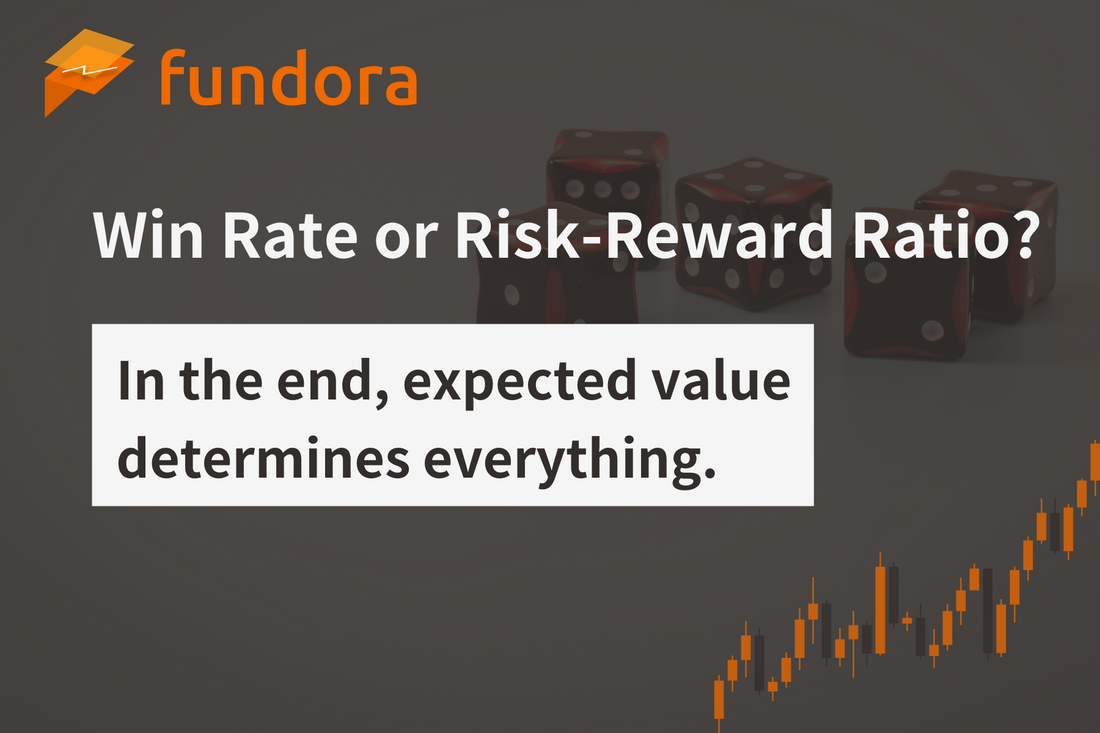
What Is Expectancy|Measuring It with a Formula
Share
What Is Expectancy|Measuring It with a Formula
Table of Contents
- 1. Introduction – Are You Judging Only by Wins or Losses?
- 2. What Is Expectancy? – Measuring “How Much You Gain on Average” with a Formula
- 3. Win Rate and Risk-Reward Are Incomplete on Their Own
- 4. Understanding Expectancy Through Examples
- 5. Backing from Financial Engineering – Expectancy and Risk of Ruin
- 6. Behavioral Economics – The “Win Rate Bias”
- 7. Conclusion – Three Steps to Develop Expectancy Thinking
1. Introduction – Are You Judging Only by Wins or Losses?
In the trading world, many believe “a higher win rate strategy is always better.” But reality is far from that simple.
A high win rate does not necessarily guarantee profitability – this may come as a surprise to new traders.
Even with the same win rate, differences in risk-reward (the ratio of average profit to average loss) can completely change your final results. The key metric that instantly reveals this difference is Expectancy.
This article explains the basics and applications of expectancy in a way beginners can grasp, and shows how Fundora incorporates this metric into real trading practices.
2. What Is Expectancy? – Measuring “How Much You Gain on Average” with a Formula
Expectancy is “how much a single trade will increase or decrease your account balance over the long term”. If expectancy is positive, your capital grows; if zero, it’s like a coin toss; if negative, your capital shrinks the longer you trade.
Expectancy Formula
Expectancy = (Win Rate × Average Profit) – [(1 – Win Rate) × Average Loss]
In other words, it’s a method to calculate the average profit per trade. This makes it clear that “a high win rate = an edge” is not always true.
3. Win Rate and Risk-Reward Are Incomplete on Their Own
The key when thinking about expectancy is to avoid evaluating win rate or risk-reward in isolation. Here’s why:
- Even with a 70% win rate, if your average profit is half of your average loss, expectancy is zero.
- Even with a 35% win rate, if your average profit is three times your average loss, expectancy is positive.
Neither win rate nor risk-reward alone can define your edge – this is why expectancy “decides everything.”
4. Understanding Expectancy Through Examples
Scenario A: Zero Game
- Win Rate: 50%
- Profit : Loss = 1 : 1
- Expectancy: 0 (Zero-Sum Game)
Scenario B: Long-Term Positive
- Win Rate: 50%
- Profit : Loss = 2 : 1
- Expectancy: +$5,000
Scenario C: High Win Rate but Negative
- Win Rate: 70%
- Profit : Loss = 1 : 2
- Expectancy: –$9,000
Without considering risk-reward along with win rate, you could end up with a strategy that consistently loses money over the long term.
5. Backing from Financial Engineering – Expectancy and Risk of Ruin
Quantitative trading uses methods like Monte Carlo simulations and bootstrap analysis to examine:
- The probability of running out of capital (Risk of Ruin) even with a positive expectancy
- The maximum drawdown that could be reached
Even with positive expectancy, the risk of ruin is never zero. Fundora recommends a “1% risk per trade” rule and combines it with a “5% daily loss limit” because trading strategies need survival-oriented design.
6. Behavioral Economics – The “Win Rate Bias”
People tend to overestimate losses and fear losing streaks excessively. This is explained by Prospect Theory, which makes traders wrongly assume “a high win rate means safety.”
However, a strategy that feels comfortable emotionally is not the same as one that grows your account. By viewing trades through the lens of expectancy, you can clearly distinguish between strategies to stick with through losing streaks and those that need immediate revision.
7. Conclusion – Three Steps to Develop Expectancy Thinking
- Review the average P/L of your past 30–50 trades and calculate expectancy
- Even with positive expectancy, check if drawdowns are within your tolerance
- Focus on improving risk-reward before trying to boost win rate
If you can prove your edge with numbers, losing streaks are just statistical noise. Use expectancy as your weapon to conquer the market with statistics, not emotions.